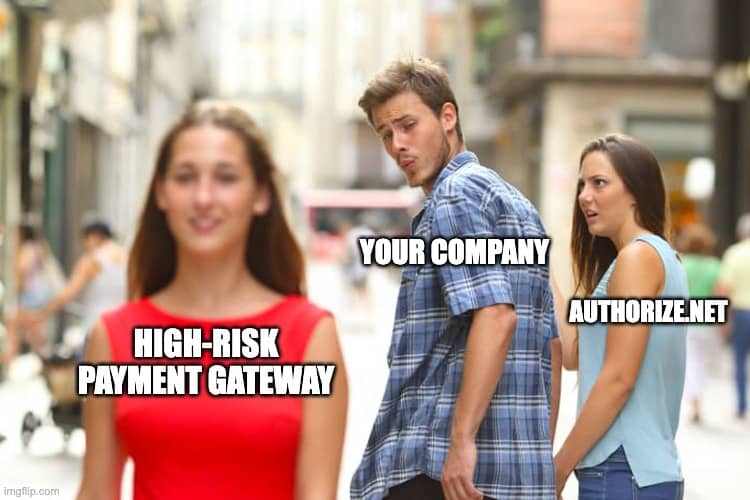ACH Reason Codes: R99 Credit Entry Refused by Receiver

R99 Credit entry refusal is a common problem that businesses face. It occurs when a receiver refuses to accept a credit entry from the sender. This can be a significant inconvenience for businesses that rely on credit entries to facilitate their transactions. It’s essential to understand why credit entry refusal can occur and to have strategies in place for dealing with it. In this blog post, we’ll explore the phenomenon of credit entry refusal and offer tips and advice for navigating its challenges.
Table of contents
- What is Credit Entry Refusal?
- Reasons for Credit Entry Refusal
- How to Avoid Credit Entry Refusal
- What to Do If Credit Entry Is Refused
- How to Resolve Credit Entry Refusal
- Benefits of Resolving Credit Entry Refusal
- Strategies for Managing Credit Entry Refusal
- Tips for Overcoming Credit Entry Refusal
- How Technology Can Help with Credit Entry Refusal
- Conclusion
What is Credit Entry Refusal?
R99 Credit entry refusal occurs when a sender attempts to send a credit entry to a receiver, and the receiver refuses to accept it. This can be a significant problem for businesses that rely on credit entries to facilitate their transactions. In some cases, the refusal may be due to a technical issue, such as a problem with the sender’s or receiver’s software. In other cases, the denial may be due to an administrative issue, such as an incorrect account number or an incorrect form of payment.
When a credit entry is refused, it can cause delays in transactions and add cost and complexity to the process. It can also lead to missed opportunities, as the sender may need help to take advantage of a time-sensitive offer or deal. Credit entry refusal can also lead to customer dissatisfaction, as customers may be frustrated by the delays and extra costs associated with the process.
Reasons for Credit Entry Refusal
There are several reasons why a receiver may refuse to accept a credit entry. One of the most common is a technical issue, such as an incorrect account number or an incorrect form of payment. Another common reason is an administrative issue, such as a lack of authorization or insufficient funds. Finally, some receivers may refuse to accept a credit entry for no apparent reason.
It’s important to note that credit entry refusal is only sometimes the fault of the sender. In some cases, the receiver may be responsible for the refusal. For example, if the receiver doesn’t have the necessary software or authorization to accept the credit entry, they may be unable to do so.
How to Avoid Credit Entry Refusal
The best way to avoid credit entry refusal is to ensure that all necessary information is provided to the receiver. This includes the sender’s account information, the amount of the credit entry, and any other relevant information. It’s also essential to ensure that the payment form is acceptable to the receiver. Finally, ensuring the receiver has the necessary software and authorization to accept the credit entry is vital.
In addition to providing the necessary information, ensuring that the sender has sufficient funds to cover the credit entry is vital. The credit entry may only be accepted if the sender has enough funds. It’s also important to remember that some receivers may have their own rules and regulations regarding credit entries. Familiarizing yourself with these rules and regulations before sending a credit entry is essential.
What to Do If Credit Entry Is Refused
If a credit entry is refused, it’s essential to contact the receiver to determine the cause of the refusal. In some cases, the denial may be due to a technical issue, such as an incorrect account number or an incorrect form of payment. In other cases, the refusal may be due to an administrative issue, such as a lack of authorization or insufficient funds. Once the cause of the rejection is determined, it can be addressed, and the credit entry can be sent again.
It’s also important to remember that some receivers may have their own rules and regulations regarding credit entries. Suppose a credit entry is refused due to violating these rules and regulations. In that case, it’s essential to contact the receiver to determine the refusal’s cause and discuss potential solutions.
How to Resolve Credit Entry Refusal
Once the cause of the credit entry refusal is determined, it’s essential to take steps to resolve the issue. Sometimes, the problem may be easily fixed by providing the necessary information or funds. In other cases, more complex solutions may be required, such as changes to the sender’s or receiver’s software. In any case, working with the receiver is essential to determine the best solution for resolving the issue.
It’s also important to remember that some receivers may have their own rules and regulations regarding credit entries. If a credit entry is refused due to violating these rules and regulations, it’s essential to contact the receiver to discuss potential solutions.
Benefits of Resolving Credit Entry Refusal
Resolving credit entry refusal can have several benefits. For starters, it can help avoid transaction delays and reduce costs and complexity. It can also help ensure the sender can take advantage of time-sensitive offers and deals. Finally, it can help to improve customer satisfaction, as customers may be more satisfied with delays and extra costs associated with the process.
Strategies for Managing Credit Entry Refusal
The best way to manage credit entry refusal is to be proactive. This means regularly checking account information and forms of payment to ensure that they are correct and that the receiver has the necessary software and authorization to accept the credit entry. Ensuring the sender has sufficient funds to cover the credit entry is also essential.
It’s also important to be familiar with the receiver’s rules and regulations regarding credit entries. This will help to ensure that the credit entry complies with these rules and regulations. Finally, it’s essential to contact the receiver if a credit entry is refused to determine the cause and discuss potential solutions.
Tips for Overcoming Credit Entry Refusal
When dealing with credit entry refusal, it’s essential to remain calm and to think of the situation as a problem to be solved. It’s necessary to take the time to understand the cause of the refusal and to take the steps needed to resolve the issue. It’s also essential to keep the lines of communication open with the receiver to ensure that the problem is resolved as quickly and efficiently as possible.
It’s also important to remember that credit entry refusal is only sometimes the sender’s fault. In some cases, the receiver may be responsible for the refusal. In these cases, it’s essential to contact the receiver to determine the refusal’s cause and discuss potential solutions.
How Technology Can Help with Credit Entry Refusal
Technology can be an excellent tool for helping to manage credit entry refusal. For starters, it can help automate the process of checking account information and forms of payment to ensure that they are correct and that the receiver has the necessary software and authorization to accept the credit entry. It can also help ensure the sender has sufficient funds to cover the credit entry.
Technology can also help to streamline the process of resolving credit entry refusals. For example, suppose a credit entry is refused due to violating the receiver’s rules and regulations. In that case, technology can be used to identify the issue quickly and to provide potential solutions. Finally, technology can be used to automate contacting the receiver if a credit entry is refused to determine the cause of the refusal and to discuss potential solutions.
Conclusion
Credit entry refusal can be a significant inconvenience for businesses that rely on credit entries to facilitate their transactions. It’s essential to understand why credit entry refusal can occur and to have strategies in place for dealing with it. By being proactive and staying informed, businesses can minimize the chances of credit entry refusal and quickly and efficiently resolve any issues that arise. Technology can also be an excellent tool for helping to manage credit entry refusal. By leveraging the right technology, businesses can ensure that their credit entries are accepted and quickly and efficiently resolve any issues that arise.
Read Next

Find out whether Authorize.Net works for high risk merchants, what restrictions you might face and how to get approved.

Get expert advice on selling CBD products on Shopify, including compliance tips and setting up secure payment options.

Find out why Square may deactivate merchant accounts and steps to resolve issues and maintain uninterrupted payment services.
Need a High-Risk Merchant Account?
Disruption-free payment processing at the best price for your situation, guaranteed.
Get Free Guidance Now!